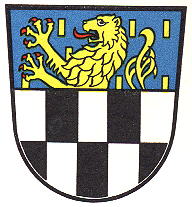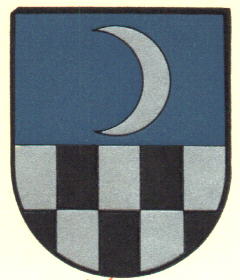Wilnsdorf: Difference between revisions
Knorrepoes (talk | contribs) No edit summary |
Knorrepoes (talk | contribs) m (Text replace - "[[Literature" to "{{media}} [[Literature") |
||
| Line 23: | Line 23: | ||
The lower half is derived from the arms of the Kolbe von Wilnsdorf family, who played a major role in the local history. | The lower half is derived from the arms of the Kolbe von Wilnsdorf family, who played a major role in the local history. | ||
{{media}} | |||
[[Literature]] : Stadler, 1964-1971, 8 volumes; Meijer, 1940 | [[Literature]] : Stadler, 1964-1971, 8 volumes; Meijer, 1940 | ||
Revision as of 09:04, 9 July 2014
| Heraldry of the World Civic heraldry of Germany - Deutsche Wappen (Gemeindewappen/Kreiswappen) |
WILNSDORF
State : Nordrhein-Westfalen
District (Kreis) : Siegen-Wittgenstein (until 1975 Siegen)
Additions : 1969 Amt Netphen (partly), Amt Wilnsdorf, Anzhausen, Flammersbach, Gernsdorf, Niederdielfen, Oberdielfen, Obersdorf, Rödgen, Rinsdorf
Origin/meaning
The arms were adopted in 1970 and are identical to the former Amt Wilnsdorf. In the new arms the lower half is similar as in the old arms. The upper half now shows the lion of Nassau, as the area historically belonged to the Principality Nassau-Siegen.
The previous arms of Wilnsdorf were granted on July 31, 1939.
The upper half shows a crescent, the old symbol for silver. Already in the 13th century the area was known for its silver mines.
The lower half is derived from the arms of the Kolbe von Wilnsdorf family, who played a major role in the local history.
Contact and Support
Partners:
Your logo here ?
Contact us
© since 1995, Heraldry of the World, Ralf Hartemink 
Index of the site
Literature : Stadler, 1964-1971, 8 volumes; Meijer, 1940












